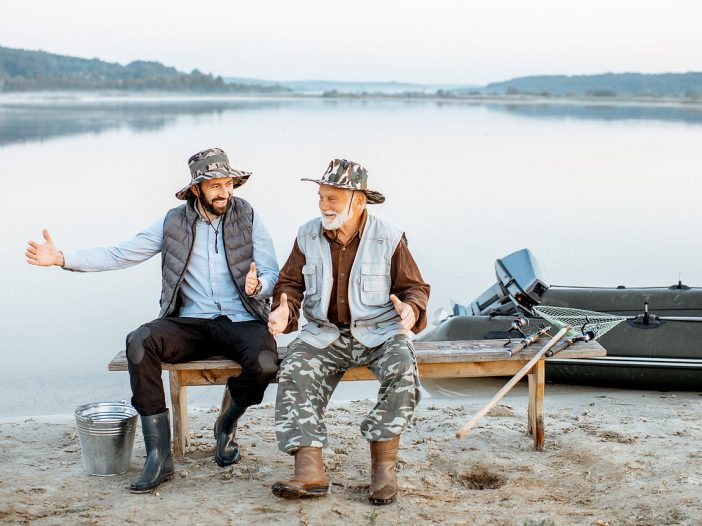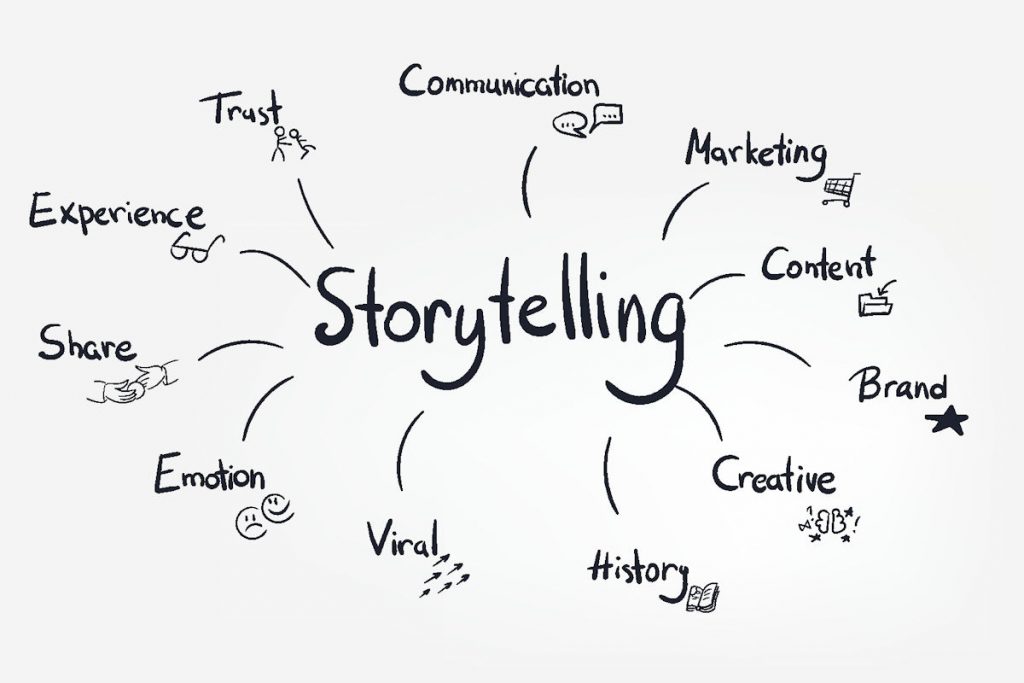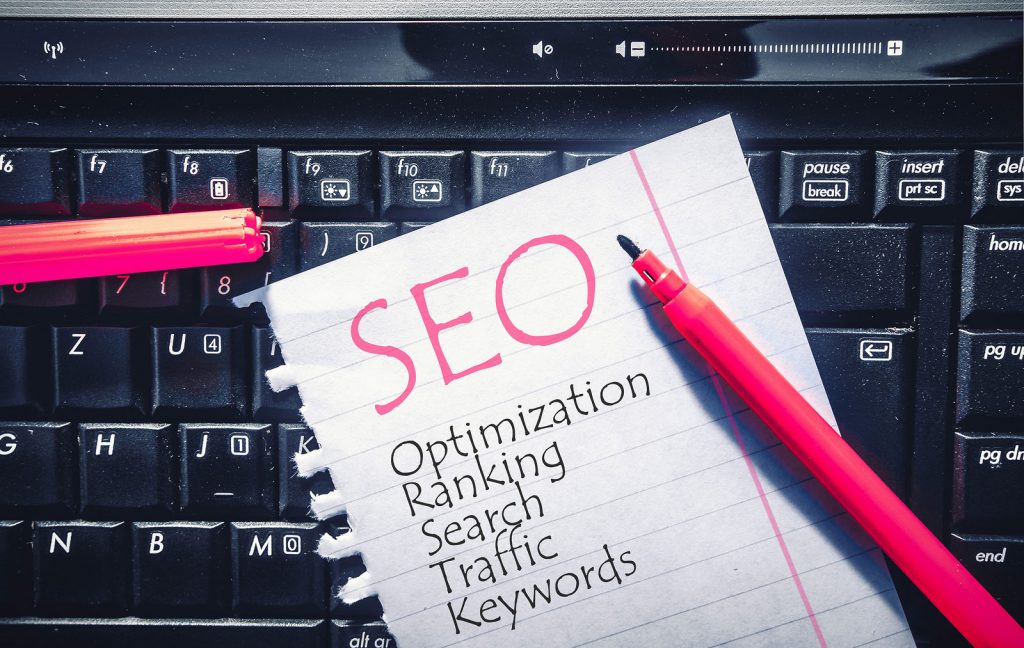
Good SEO and Good Storytelling: Can we have both?
I started this piece wondering to myself, “Good SEO and Good Storytelling: Can we have both?”, and I gotta tell you, I was skeptical.
As I researched further, I discovered that the answer is YES we can. Purists on either side will argue, “Yeah, except…” But, let’s leave perfection aside and focus on doing the best we can with what is in our control.
First of all, let’s talk about why I was feeling that SEO and story might not be compatible.
Primarily, I worried about the flow. Wouldn’t the SEO techniques disrupt the momentum of the story?
A good story has a certain flow.

Whether thrillers, memoirs, or sci-fi novels, the stories we read for pleasure have a flow that captures our attention and transports us into another world. I like the “feel-good” and romance stories. The cadence is easy and light. There is often a hint of mystery or element of intrigue that keeps me reading to the next sentence, paragraph, and chapter.
But, does flow matter when it comes to corporate storytelling?
The stories that I wondered about are the ones published online for business purposes. They might entertain, but entertainment is secondary to the underlying business objective.
I asked Amanda Grazioli, small business copywriter & brand messaging consultant, for her thoughts about good business storytelling. She explains,
“The human brain is wired for story. When our emotions and senses are involved in processing new information, we remember it more clearly and for longer.
Strong brand storytelling on your website can help you connect with your customers on an emotional level, helping you to authentically gain their attention and build trust.
Much like a great fairytale, storytelling for the web needs to have certain components like specific details, three-dimensional characters, and a plot (the before state, the transformation, and the outcome). But instead of merely engaging or entertaining, stories in your web copy need to serve a specific business purpose.
That purpose might be to highlight your commitment to a particular value, building a bridge between you and your customer. Or, you might use a story to show how a person just like your reader avoided pain and achieved great things thanks to your product or service.
Regardless, story is being used to lay the necessary groundwork for the reader to confidently take your desired action—whether that’s subscribing to emails, making a purchase, or booking a call.”

With this advice in mind, when writing a great business story, we want to:
- identify a specific business objective
- write a compelling story that interests our prospects,
- build in that recognizable, irresistible narrative flow.
But, what good is a story if no one knows it exists? That’s where search engine optimization (SEO) comes in.
SEO-powered content has a different flow.
Before delving into this topic, I worried that the choice, order, and placement of the words that appeal to the search engines would break the good storytelling cadence.
To me, SEO-powered content has always felt a little stiff and jagged. It requires adding specific words in a certain order in particular places to help search engines understand who we are, what we offer, and how clients benefit from working with us. It’s unemotional and formulaic work.
Why are the flows of good storytelling and good SEO different?
Well, the two approaches have different target audiences.
Writing to capture the interest of different audiences is typically accomplished through writing different versions of the same article. You may be familiar with creating personas in order to develop your marketing strategy. We create buyer personas to help us focus our content to appeal to each specific type of prospect. Writing to a specific persona may change the words we use and the stories we tell.
When writing a business blog post, one of your target audiences (or personas) is a human and the other is a search engine that cannot do complex thinking. The requirements to help a search engine understand our message and intention for writing the piece are different from helping a person understand the same.
You might be thinking right now, “OMG. I have enough on my plate. Why should I care about the search engines? I’m networking and engaging on social media all the time. I get plenty of engagement and responses to my posts.”
I hear you. The thing is that the search engines have the power to bring us many, many more prospects than we could ever drive to our websites on our own. I’ve been adding SEO to websites and teaching on-page SEO for over 15 years. I have attended dozens of Google presentations. Every Google expert I’ve learned from has affirmed that Google will always drive more traffic to your website than any other source. (This is not just boasting. When you consider Google’s reach and the referral sources and actions (shares, comments, likes, etc.) included in the Google algorithm, mathematically, it would be easy to prove. But, that, my friends, is a blog post for another day.)
When writing to appeal to a search engine, we need to provide the right information about us in a format that the search engines understand.
When we do that well,
- The search engines lead increasing numbers of visitors to our websites.
- The increased traffic can increase our readership.
- Increased readership leads to greater visibility, and with greater visibility, we have greater opportunity to convert readers to clients.
To take the possibilities even further, we want the content to be so informative and entertaining that our readers become our advocates; commenting on and sharing our content and returning regularly to read new posts and share those, and so on and so on.
Having humans advocating for us complements our SEO efforts and silently influences the search engines’ decision about the ranking and placement of our content in the search engine results pages. (Yes, search engines evaluate our social engagement as part of their ranking factors.)
Targeting search engines
When we focus on the search engines as our target persona, the words we use and the structure of the story are most important.

Words: SEO involves rules, algorithms, and statistics that evaluate our words. For bots to understand your writing it is important to use “the right words in the right order in the right places”.
Using “the right words in the right order in the right places” shifts the quality of the traffic you bring to your website. General traffic is replaced with traffic by a highly targeted audience of high-probability prospects. High-probability prospects are ready to buy and that improves your probability of making a sale and, consequently, increasing your conversion rate.
Structure: One of the characteristics of the structure is that it indicates the most important to the least important. In our case, it helps humans and search engines understand which is the most important information in the article.
Luckily, there are built-in structure-indicating tools (called tags) that all web browsers understand. The browsers look for these in order to display content as we intend it to be displayed.
The two most common structure tags are heading tags (heading 1, heading 2, heading 3, etc.) and paragraph (Paragraph) tags.
<h2>This is my Chapter Heading in between the tags<h2>
<p>this is my paragraph in between the paragraph tags</p>Using these tags we can structure our blog posts for easy reading by humans and search engines. [Learn more about using heading tags for SEO.]
Can we meld storytelling rules and SEO rules to create one piece of content that is equally attractive to humans and to search engines?
Search engine experts assert that if we structure our content for the best human understanding (see article by Yoast), the content will automatically be in the best format for SEO readability and comprehension.
But writing content that is emotionally evocative, useful, and has a solid SEO structure is a tall order. Like me, you may be wondering where to begin.
I suggest starting with good storytelling techniques and then overlaying the story with best-practice SEO tactics.
What are Good Storytelling Techniques?
We know that stories need a beginning, a middle, and an end.
We need characters, a storyline, and, an intention.
In order to engage human readers, we need characters they care about, a plotline that piques their interest, and a hook that helps them identify themselves. Maybe the hook is a character. Or it might be the problem or location.
To capture the reader’s interest, it’s beneficial to consider their intention for consuming this piece of content. Are they doing product/service research? Are they following do-it-yourself instructions in a how-to article? Are they reading in order to gain knowledge in their field? This is where the development of personas helps keep our writing focused.
Meld all of those considerations into a story arc that is familiar to readers. In general, we’ll follow this sequence.
- Introduction
- Rising Action/Problem/Issue
- Climax
- Falling Action
- Resolution/Wrap it up
As a copywriter, Amanda Grazioli recommends that the stories we craft for our business websites be:
| Relatable | The reader has to see themselves and their struggles/goals in the story. |
| Purposeful | There needs to be a clear business objective for the story (building brand affinity, showing a use case for a product/service, demonstrating a positive result from a past customer in order to prompt sales or inquiries). |
| Concise | Editing is key. Attention spans are brief. Every word needs to count. |
| Real | Your authentic brand voice and personality need to come through. |
| Well-formatted | Story needs to be broken up visually using whitespace, H2 sub-headers, images, etc. to be scannable/digestible. |
| Paired with a CTA | There should be Call to Action button/link on the same page as the story, and the action should support the story. |
What are Good SEO Techniques?
- Use keyword phrases
- Use semantic words and phrases
- Structure the story with sections, chapters, paragraphs
- Use heading tags for each section
- Place the most important words first
- Bold and italicize important (non-heading) words in paragraphs
- Add keyword-rich text links to other content on our website
How do we put it all together?
- Write a Good Story
- Define the purpose: Determine the intention for writing about the selected topic. What do we hope to accomplish with this story?
- Define the audience: Clarify the target audience (or persona) and how they will benefit from reading our content. The audience will help us determine thigns like word choice and key points to make.
- Make an outline: Map out major ideas/concepts to create a roadmap of your storyline.
- Write paragraphs: Craft paragraphs for each outlined bullet point.
- Check the paragraph sizes: Confirm that the paragraphs are scannable and digestible lengths.
- Check the flow: Rearrange the paragraphs if necessary so that the information is in logical order flowing easily from one to the other.
- Check for emotion: Reread each paragraph evaluating its potential for audience engagmenet and evoking the desired feeling in our reader. Make necessary adjustments as needed.
- Add Good SEO
- Check for keyword phrases: Reread each paragraph. Does it contain words that our high-probability prospects will use to find us when doing a search?
- Add headings: Use chapter headings, subchapter headings to help search engines follow your content points.
- Highlight important words and phrases in bold: Call attention to key points with bold text to help readers and bots scan and understand the important ideas.
- Related words and terms: Have we rephrased our key terms? If not, we should find ways to do so.
- Check the text links: Is there at least one link from our post to an internal page on the same site? Do the linked words contain keyword-related words or does the link say, Click here? Keyword rich links are best.
Following this approach, we can have both good storytelling and good SEO in the same post. In fact, many of the components that create a great human reading experience also help strengthen our SEO efforts.
| Component | Helps Readers Understand | Helps Search Engines Understand |
|---|---|---|
| Keyword-Rich Article / Post Title | Yes | Yes |
| Headings: Sections, Chapters, Subtitles | Yes | Yes |
| Keyword phrases mixed with re-stated phrases mixed with semantically-related phrases | Yes | Yes |
| Bold words | Yes | Yes |
| Clearly stating your intention | Yes | Yes |
| Descriptive text link | Yes | Yes |
| Words that evoke emotion | Yes | No |
| Article / Post URL | No | Yes |
The takeaway? We can stop thinking of it as Good SEO “versus” Good Storytelling and take specific steps to achieve Good Storytelling “with” Good SEO.
What are your thoughts? What would you add to this article for us to consider?